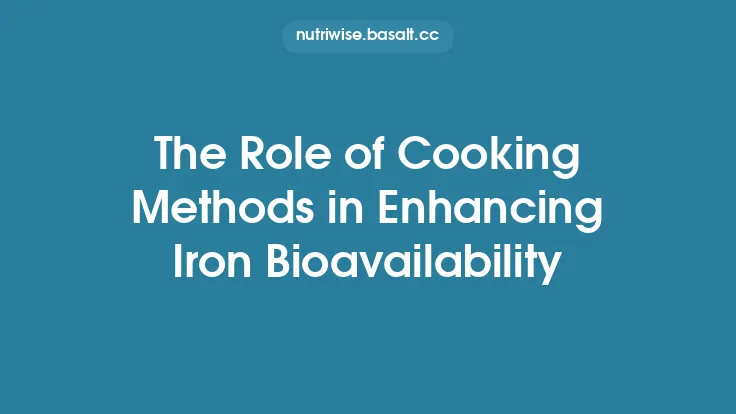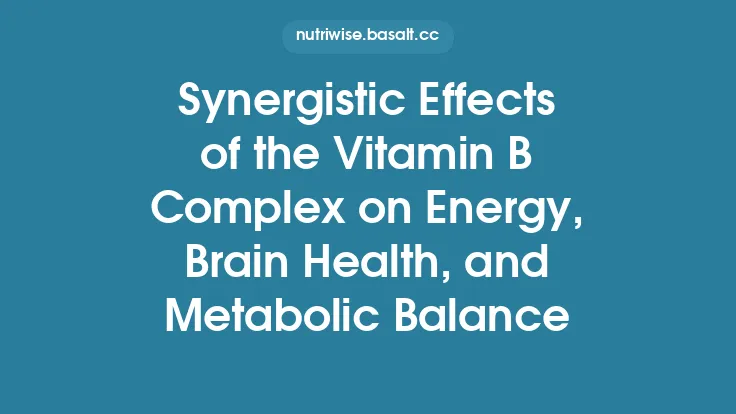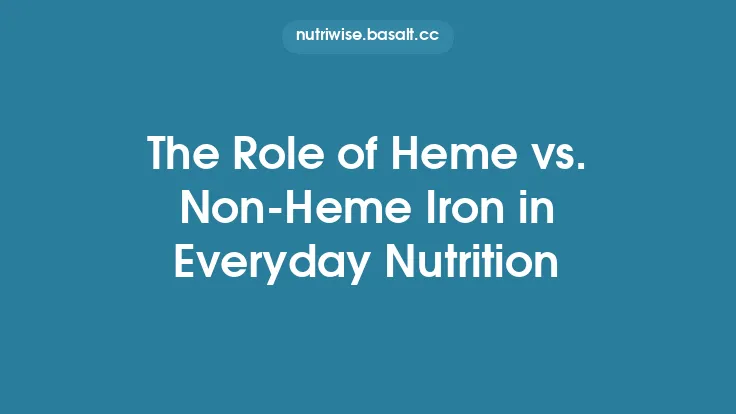Phytates, also known as phytic acid (myo‑inositol hexakisphosphate, IP6), are the principal storage form of phosphorus in many plant seeds, legumes, nuts, and whole grains. Their high affinity for multivalent cations enables them to chelate minerals such as calcium, iron, zinc, magnesium, and copper, forming insoluble complexes that are poorly absorbed in the human gastrointestinal tract. This property has positioned phytates at the center of a long‑standing debate in nutrition science: are they antinutrients that diminish mineral status, or do they confer health benefits that outweigh their inhibitory effects? Understanding the molecular underpinnings of phytate–mineral interactions, the physiological context in which they occur, and the dietary factors that modulate their impact is essential for both researchers and practitioners seeking to optimize mineral bioavailability while preserving the broader nutritional value of phytate‑rich foods.
Chemical Basis of Phytate–Mineral Complexation
Phytic acid is a highly phosphorylated cyclitol bearing six phosphate groups, each capable of donating a negative charge at physiological pH. This poly‑anionic structure enables strong electrostatic interactions with positively charged metal ions. The resulting phytate–metal complexes can be categorized as:
- Monodentate complexes – where a single phosphate group coordinates a metal ion.
- Bidentate and multidentate chelates – where two or more phosphate oxygens simultaneously bind a single metal ion, creating a more stable ring structure.
- Polymeric precipitates – when multiple phytate molecules bridge several metal ions, leading to the formation of insoluble aggregates.
Stability constants (log K) for phytate complexes vary among minerals. For example, the log K for Fe³⁺–phytate is approximately 20, indicating an extremely stable complex, whereas the log K for Ca²⁺–phytate is lower (≈12). Zinc and magnesium fall in between, with log K values around 15–17. These differences explain why phytates more profoundly inhibit the absorption of iron and zinc compared with calcium, which can be partially compensated by active transport mechanisms in the intestine.
Site of Interaction: The Gastrointestinal Milieu
The majority of phytate–mineral complex formation occurs in the duodenum and proximal jejunum, where the pH (≈6–7) favors deprotonation of phosphate groups and thus maximizes chelation potential. Several physiological factors influence the extent of complexation:
- pH Gradient: In the acidic stomach (pH ≈ 2), phytate is partially protonated, reducing its binding capacity. As chyme enters the small intestine, the rise in pH enhances deprotonation, promoting complex formation.
- Presence of Competing Ligands: Dietary components such as citrate, lactate, and certain amino acids can compete with phytate for mineral binding, thereby attenuating the inhibitory effect.
- Enzymatic Hydrolysis: Endogenous and microbial phytases (phytate‑hydrolyzing enzymes) cleave phosphate groups, converting IP6 to lower‑phosphorylated inositol phosphates (IP5–IP1) and free inorganic phosphate. This step reduces the chelating capacity of phytate and liberates bound minerals.
Factors Modulating Phytate’s Impact on Mineral Bioavailability
1. Food Processing and Preparation
- Thermal Treatment: Soaking, sprouting, fermentation, and cooking can activate endogenous phytases or introduce microbial phytases, leading to partial dephosphorylation of phytate. For instance, sourdough fermentation of whole‑grain wheat can reduce phytate content by 30–50 %, markedly improving iron and zinc absorption.
- Mechanical Processing: Milling that removes the bran layer (where phytate is concentrated) lowers the overall phytate load of flours, albeit at the cost of dietary fiber and other phytonutrients.
2. Dietary Mineral Load
The inhibitory effect of phytate is dose‑dependent. High dietary intakes of a particular mineral can partially overcome phytate binding through mass‑action effects. However, this strategy is limited for iron and zinc, whose absorption is tightly regulated and can be saturated at relatively low intakes.
3. Co‑consumption of Enhancers
- Ascorbic Acid (Vitamin C): While the article must avoid discussing synergistic vitamin C–iron absorption, it is permissible to note that ascorbate can reduce Fe³⁺ to Fe²⁺, a form less prone to phytate binding, thereby indirectly influencing iron bioavailability.
- Organic Acids: Citric and malic acids form soluble metal complexes that are less susceptible to precipitation with phytate, enhancing absorption.
- Proteins and Amino Acids: Certain peptides can chelate minerals, competing with phytate and facilitating transport across the enterocyte membrane.
4. Gut Microbiota Activity
Colonic bacteria possessing phytase activity can hydrolyze residual phytate that reaches the large intestine, releasing phosphorus and potentially liberating bound minerals for microbial utilization. While the contribution of colonic mineral absorption to overall status is modest, microbial phytate degradation can affect systemic phosphorus balance and may have indirect effects on mineral homeostasis.
Health Implications of Phytate‑Induced Mineral Modulation
Antinutrient Perspective
In populations relying heavily on phytate‑rich staples (e.g., unrefined cereals and legumes) without adequate dietary diversity, phytate can contribute to subclinical deficiencies of iron, zinc, and calcium. This is especially relevant for:
- Women of reproductive age: Higher iron requirements make them vulnerable to phytate‑mediated iron inhibition.
- Children and adolescents: Rapid growth demands efficient mineral utilization; high phytate intake may limit calcium and zinc availability for bone development and immune function.
Potential Benefits
Emerging evidence suggests that phytate’s mineral‑binding properties may confer protective effects:
- Reduced Oxidative Damage: By chelating transition metals (Fe³⁺, Cu²⁺), phytate can limit Fenton‑type reactions that generate reactive oxygen species.
- Modulation of Mineral Overload: In conditions of excessive dietary calcium or iron, phytate may act as a natural regulator, preventing hyperabsorption and associated pathologies.
Thus, phytate should be viewed as a double‑edged sword, with its net impact contingent upon overall dietary patterns, processing methods, and individual nutritional status.
Methodological Approaches to Assess Phytate–Mineral Interactions
In Vitro Simulations
- Dialysis and Caco‑2 Cell Models: Simulated gastrointestinal digestion followed by dialysis allows quantification of soluble mineral fractions in the presence of phytate. Caco‑2 monolayers provide a cellular context to evaluate transepithelial transport.
- Isothermal Titration Calorimetry (ITC): Direct measurement of binding thermodynamics between phytate and specific metal ions yields affinity constants and stoichiometry.
In Vivo Techniques
- Stable Isotope Tracers: Administration of isotopically labeled minerals (e.g., ⁵⁷Fe, ⁶⁵Zn) enables precise determination of fractional absorption in human subjects consuming controlled phytate levels.
- Balance Studies: Whole‑body mineral balance, combined with dietary intake records, offers insight into long‑term effects of phytate consumption on mineral status.
Analytical Determination of Phytate
- High‑Performance Liquid Chromatography (HPLC) with post‑column derivatization or ion‑exchange chromatography provides accurate quantification of IP6 and its lower‑phosphorylated derivatives.
- Spectrophotometric Assays (e.g., Wade reagent) remain useful for rapid screening but lack specificity for individual inositol phosphates.
Practical Recommendations for Optimizing Mineral Bioavailability
- Incorporate Food Processing Techniques: Soaking beans for 12–24 h, sprouting grains, and employing sourdough fermentation are effective, low‑cost strategies to reduce phytate content.
- Balance Meal Composition: Pair phytate‑rich foods with sources of organic acids (e.g., citrus fruits, tomatoes) or modest amounts of animal protein to mitigate mineral binding.
- Diversify the Diet: Include phytate‑low foods (e.g., dairy, meat, certain fruits) to ensure adequate intake of iron, zinc, and calcium, especially for at‑risk groups.
- Consider Supplemental Phytase: Commercial phytase preparations can be added to flours or mixed meals, particularly in institutional feeding programs where staple grains dominate.
- Monitor Mineral Status: Periodic assessment of serum ferritin, zinc, and calcium levels can guide dietary adjustments in populations with high phytate consumption.
Emerging Research Directions
- Genetic Engineering of Low‑Phytate Crops: Breeding or CRISPR‑mediated knock‑out of phytate biosynthetic genes (e.g., myo‑inositol 3‑phosphate synthase) aims to produce staple varieties with reduced phytate while preserving agronomic traits.
- Targeted Microbial Phytase Delivery: Development of probiotic strains engineered to express high‑activity phytases offers a novel avenue to enhance in‑situ phytate degradation.
- Systems Nutrition Modeling: Integrating phytate–mineral interaction data into computational models of nutrient absorption can predict individual responses based on genotype, gut microbiota composition, and dietary patterns.
- Longitudinal Cohort Studies: Investigating the relationship between lifelong phytate intake, mineral status, and health outcomes (e.g., bone density, anemia prevalence) will clarify the balance between antinutrient and protective effects.
Concluding Perspective
Phytates exemplify the complexity of nutrient interactions within the human diet. Their capacity to form stable, insoluble complexes with essential minerals is rooted in well‑characterized chemical principles, yet the physiological consequences are modulated by a web of dietary, microbial, and host factors. While high phytate intake can impair the bioavailability of iron, zinc, calcium, and magnesium—particularly in nutritionally vulnerable populations—strategic food processing, thoughtful meal planning, and emerging biotechnological interventions can attenuate these drawbacks. Simultaneously, the metal‑chelating properties of phytate may afford antioxidant protection and guard against mineral excess. As research continues to unravel the nuanced role of phytates, nutrition professionals are equipped to harness their benefits while mitigating potential risks, thereby supporting optimal mineral nutrition across diverse dietary contexts.





